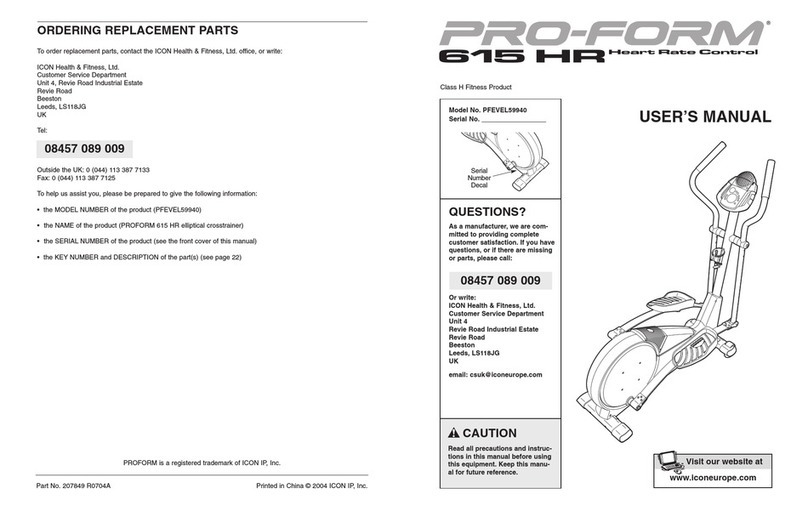Pro-Form XP WhirlWind 280 User manual
Other Pro-Form Exercise Bike manuals
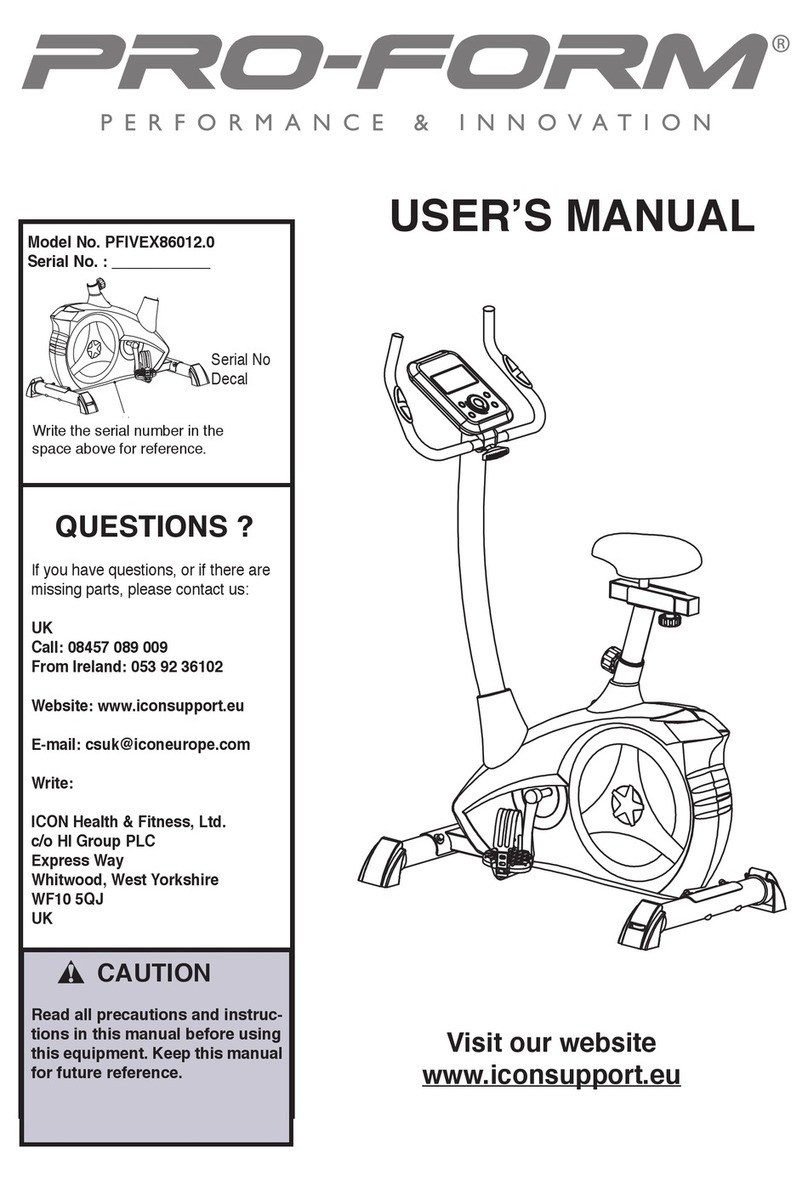
Pro-Form
Pro-Form PFIVEX86012.0 User manual
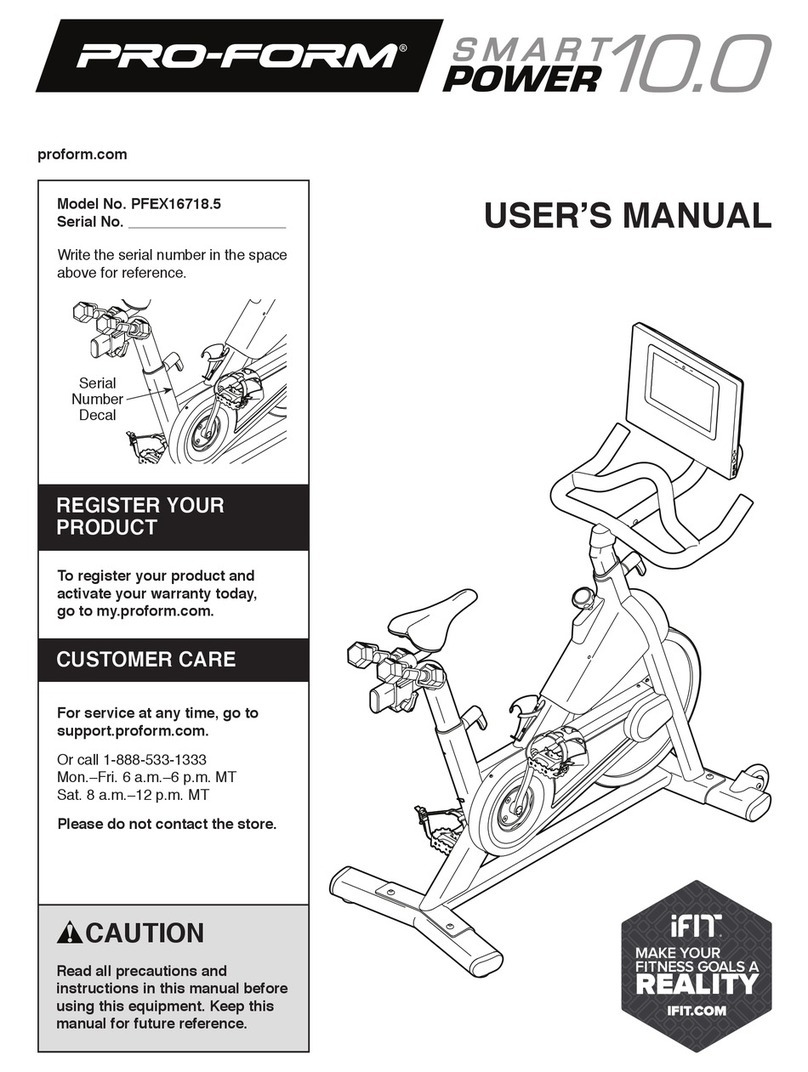
Pro-Form
Pro-Form PFEX16718.5 User manual

Pro-Form
Pro-Form 831.288280 User manual
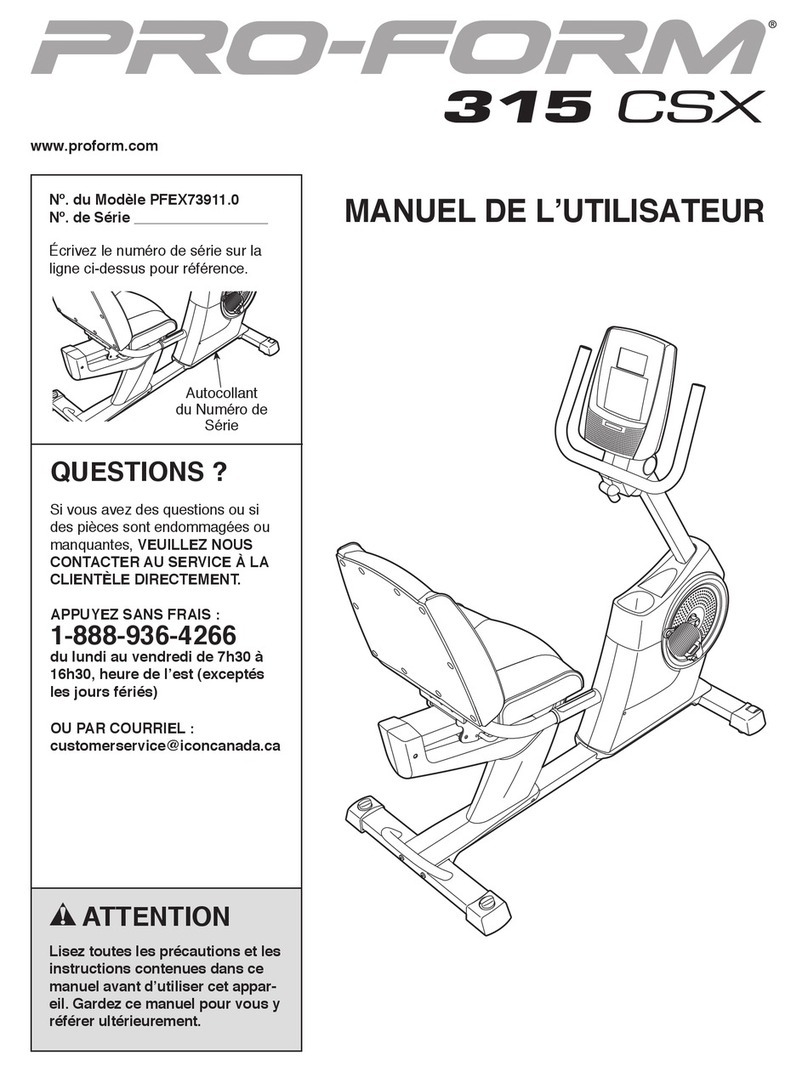
Pro-Form
Pro-Form 315 Csx Bike User manual

Pro-Form
Pro-Form 831.280441 User manual
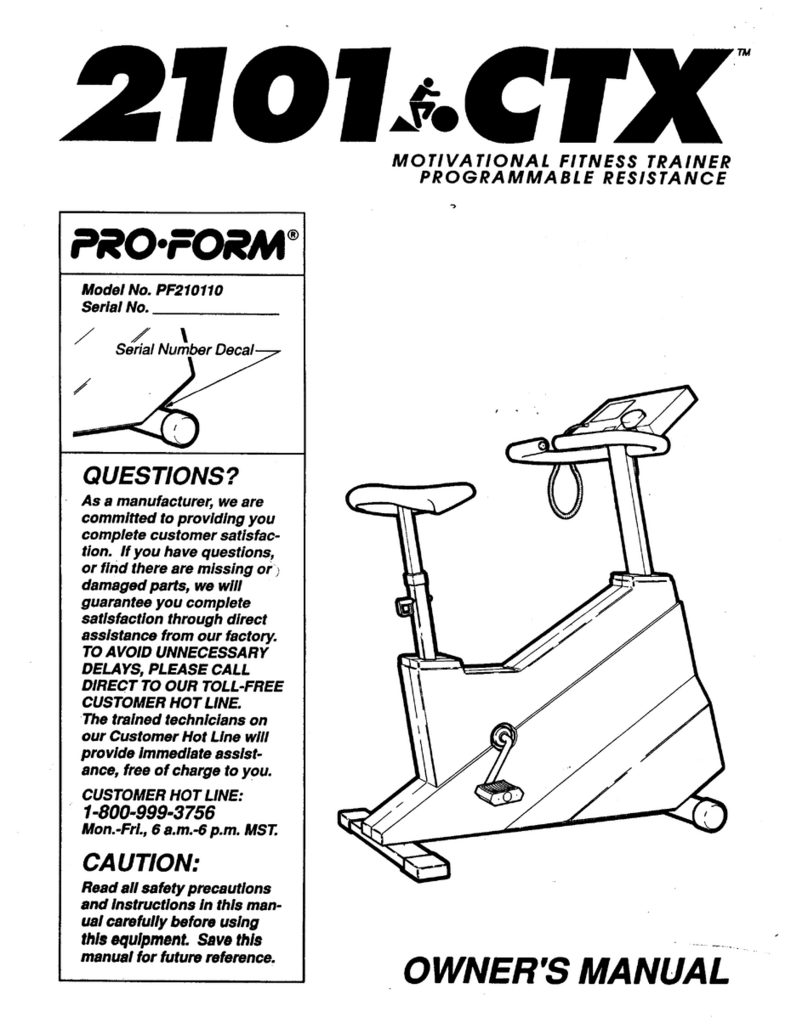
Pro-Form
Pro-Form 2101ctx User manual
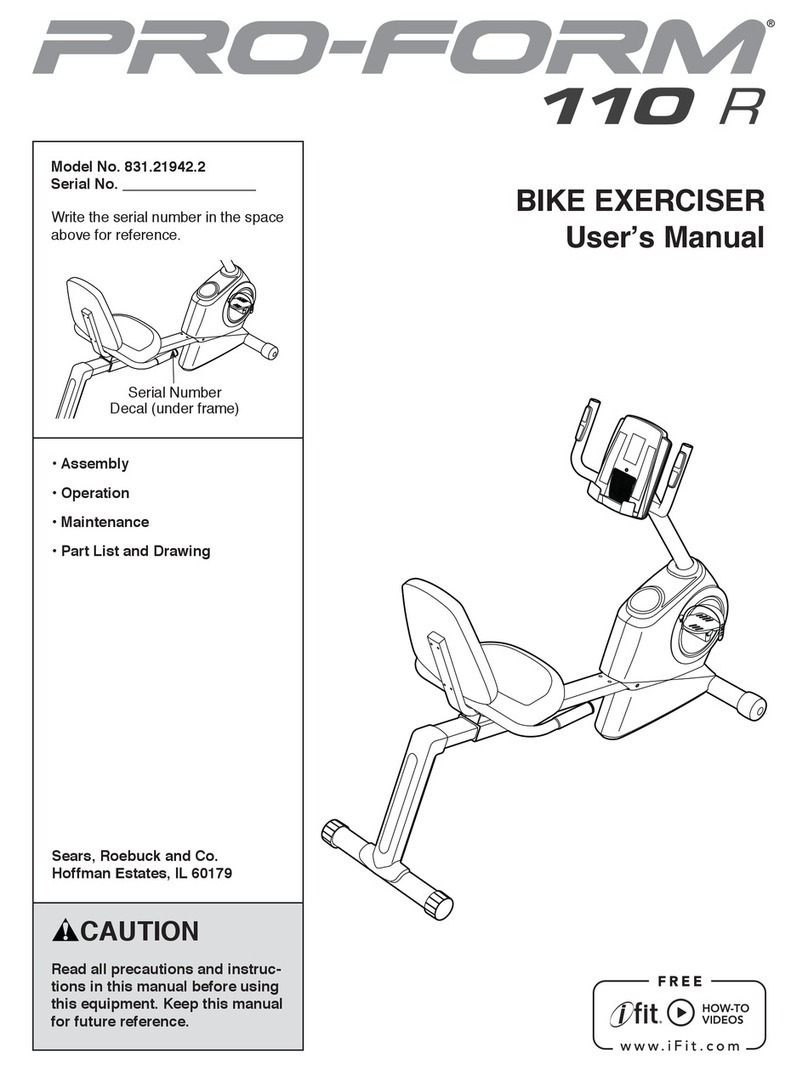
Pro-Form
Pro-Form 110 R User manual
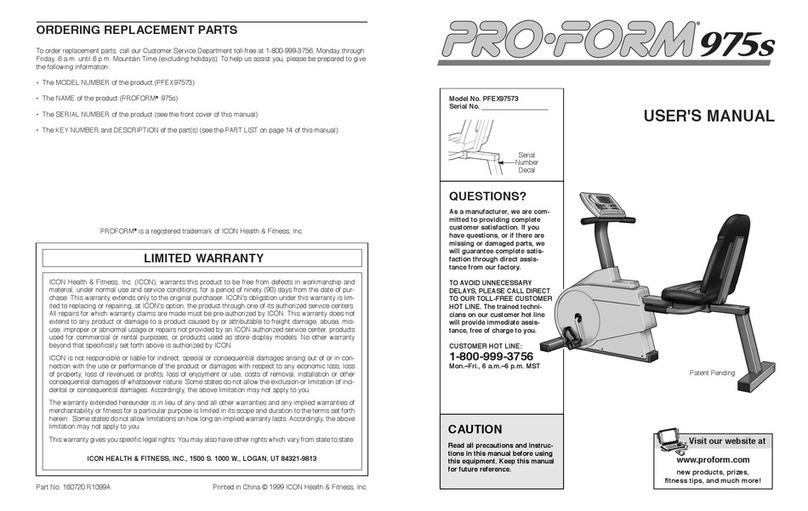
Pro-Form
Pro-Form PFEX97573 User manual
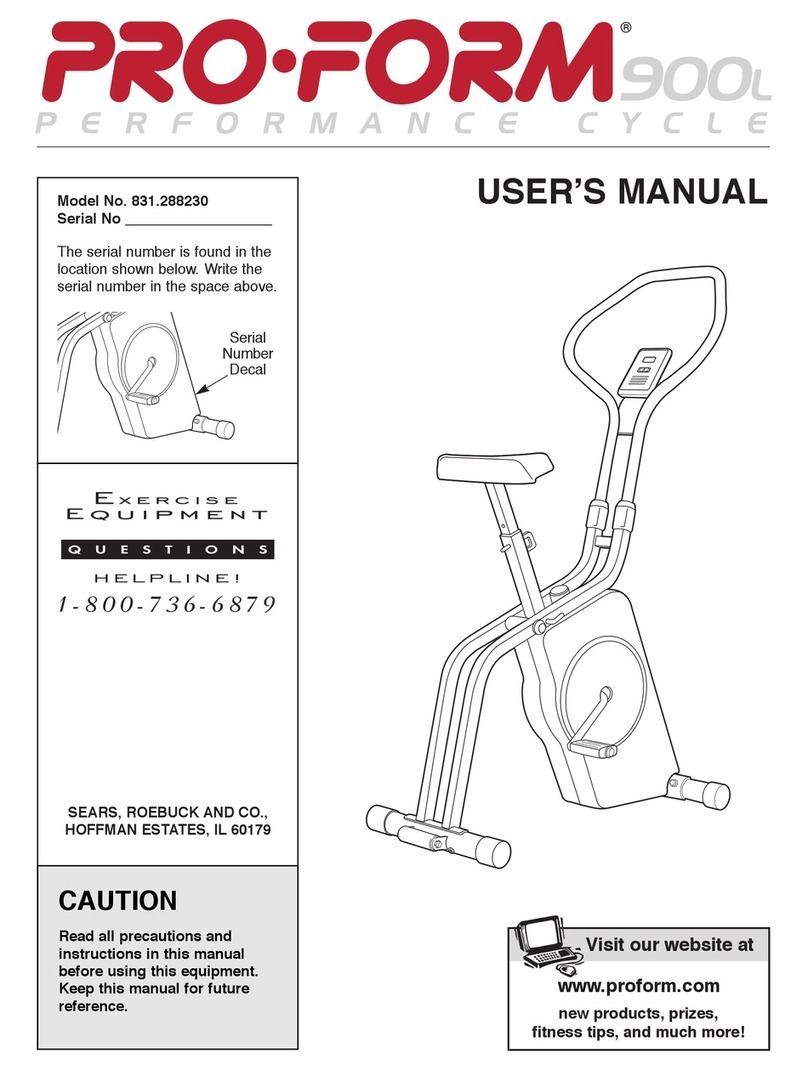
Pro-Form
Pro-Form 900L 831.288230 User manual
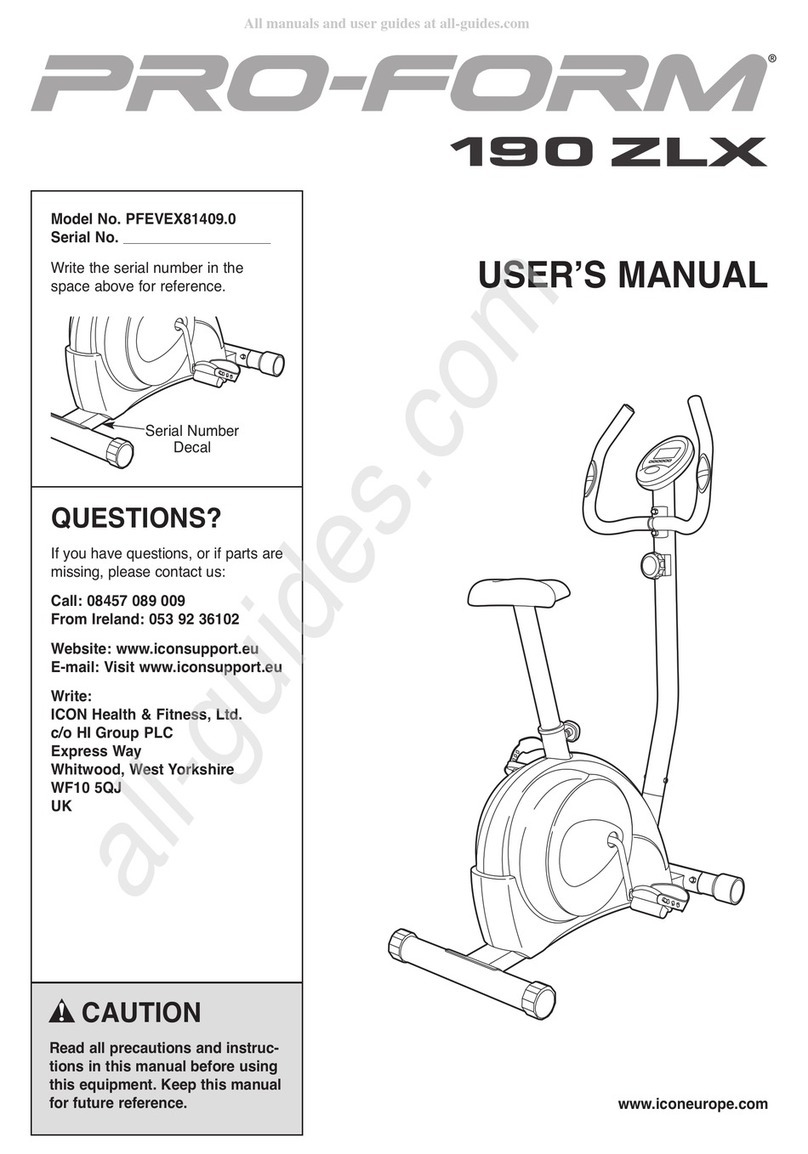
Pro-Form
Pro-Form 190 ZLX User manual
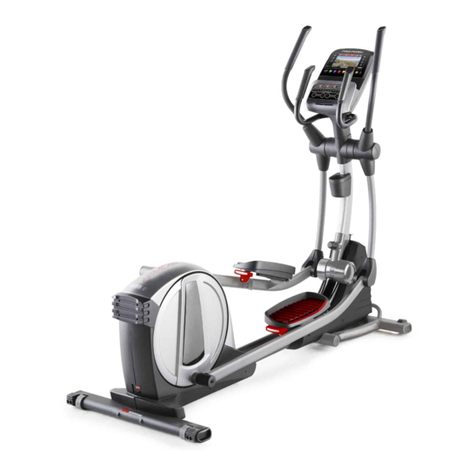
Pro-Form
Pro-Form 935 E User manual

Pro-Form
Pro-Form 740 Ekg Bike User manual
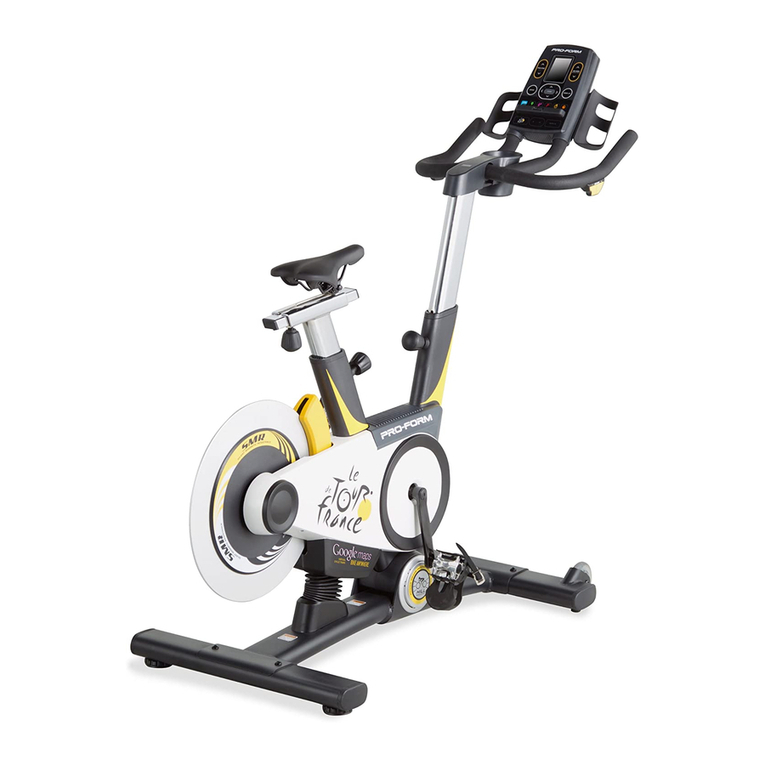
Pro-Form
Pro-Form Le Tour De France PFEX01312.0 User manual
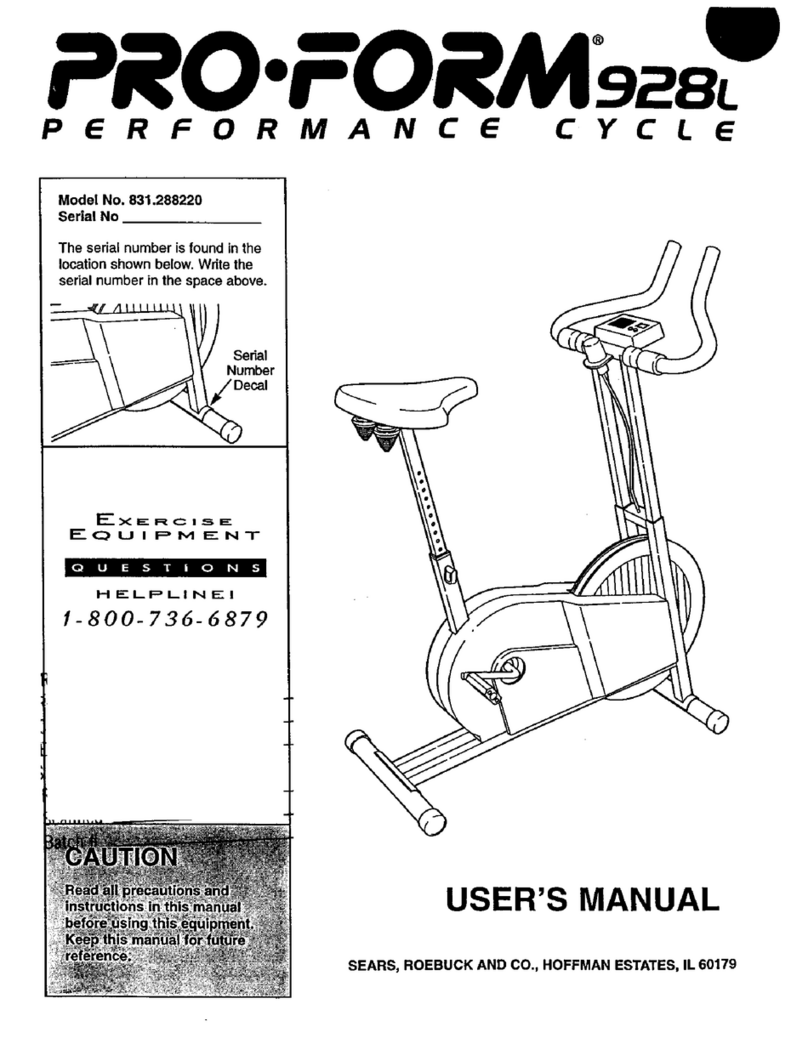
Pro-Form
Pro-Form 831.28822 User manual

Pro-Form
Pro-Form 225 Zlx Bike User manual

Pro-Form
Pro-Form 380 Zlx Bike User manual

Pro-Form
Pro-Form 1550cwi User manual

Pro-Form
Pro-Form 735 Ekg Bike User manual

Pro-Form
Pro-Form 180 Zlx Bike Quick start guide
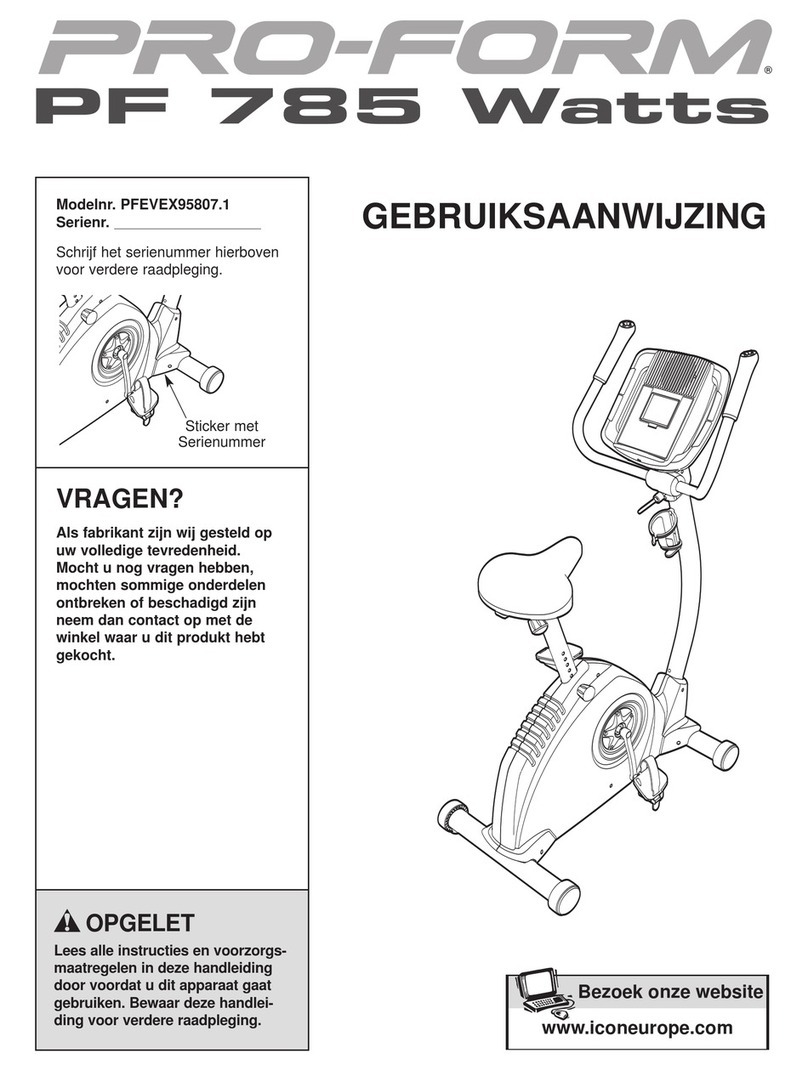
Pro-Form
Pro-Form 785 Watts Bike System manual
Popular Exercise Bike manuals by other brands

Sunny Health & Fitness
Sunny Health & Fitness SF-B121021 user manual

Monark
Monark 827E instruction manual

Stamina
Stamina 1310 owner's manual

American Fitness
American Fitness SPR-BK1072A owner's manual

Cateye
Cateye CS-1000 (CYCLO SIMULATOR) Service manual

BH FITNESS
BH FITNESS H9158H Instructions for assembly and use


